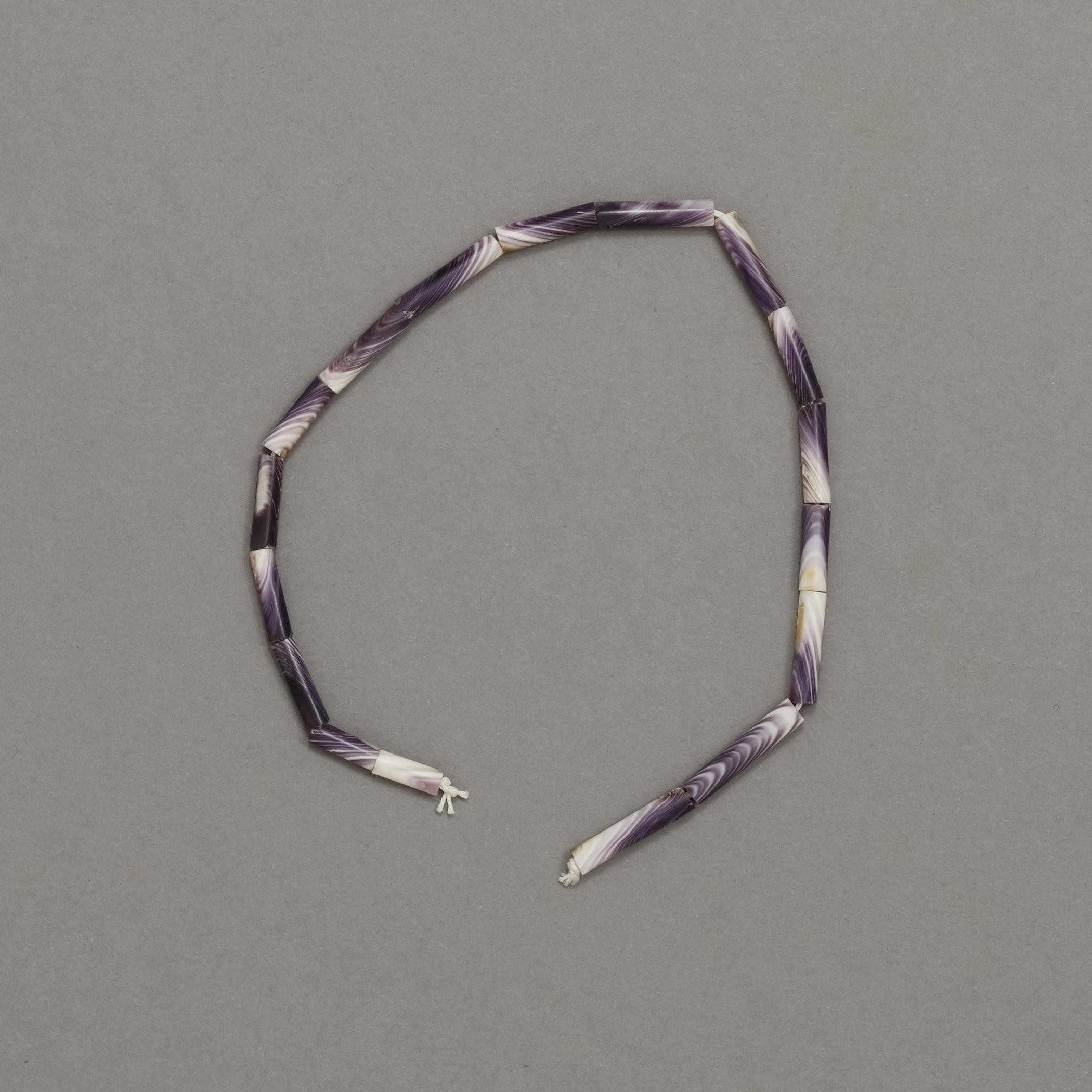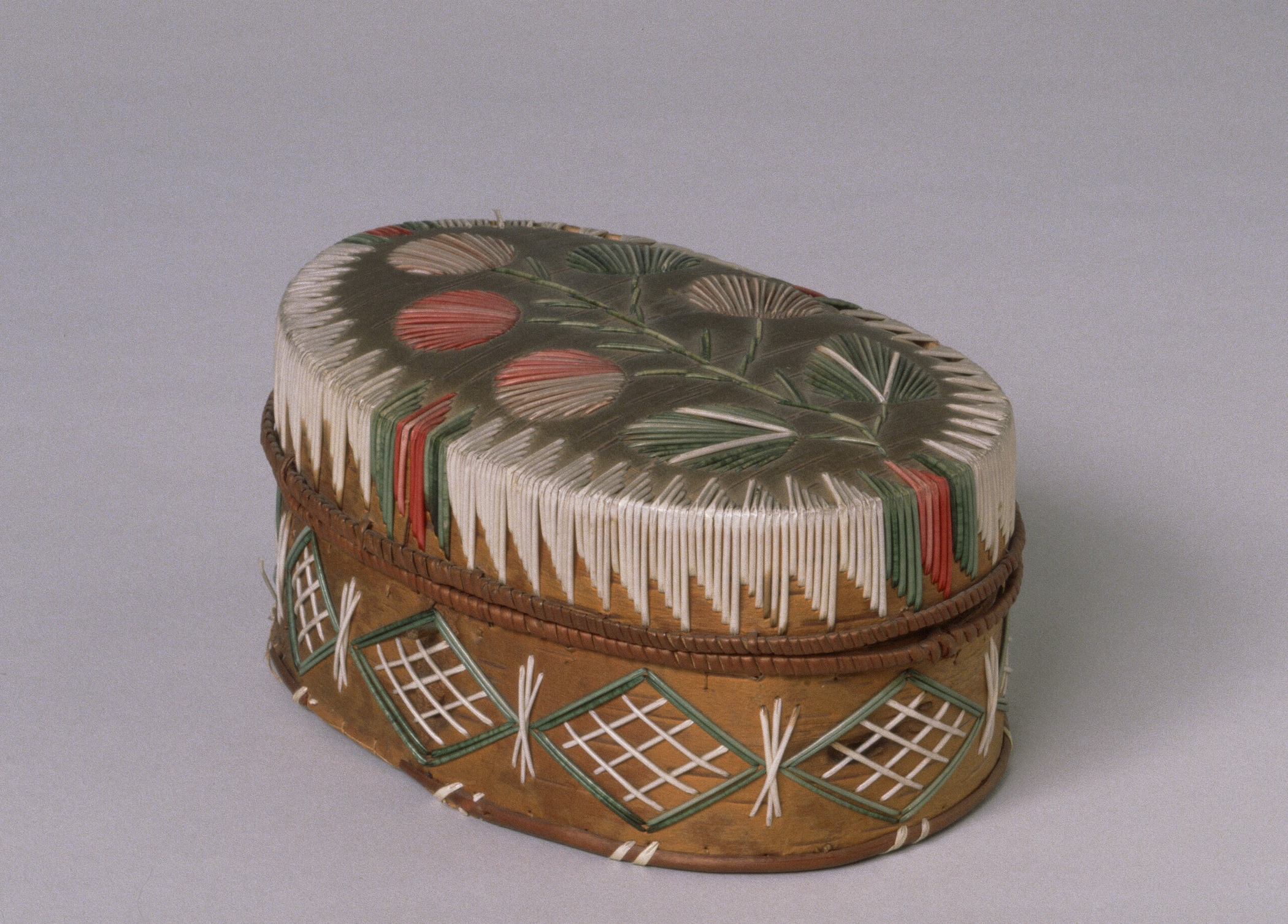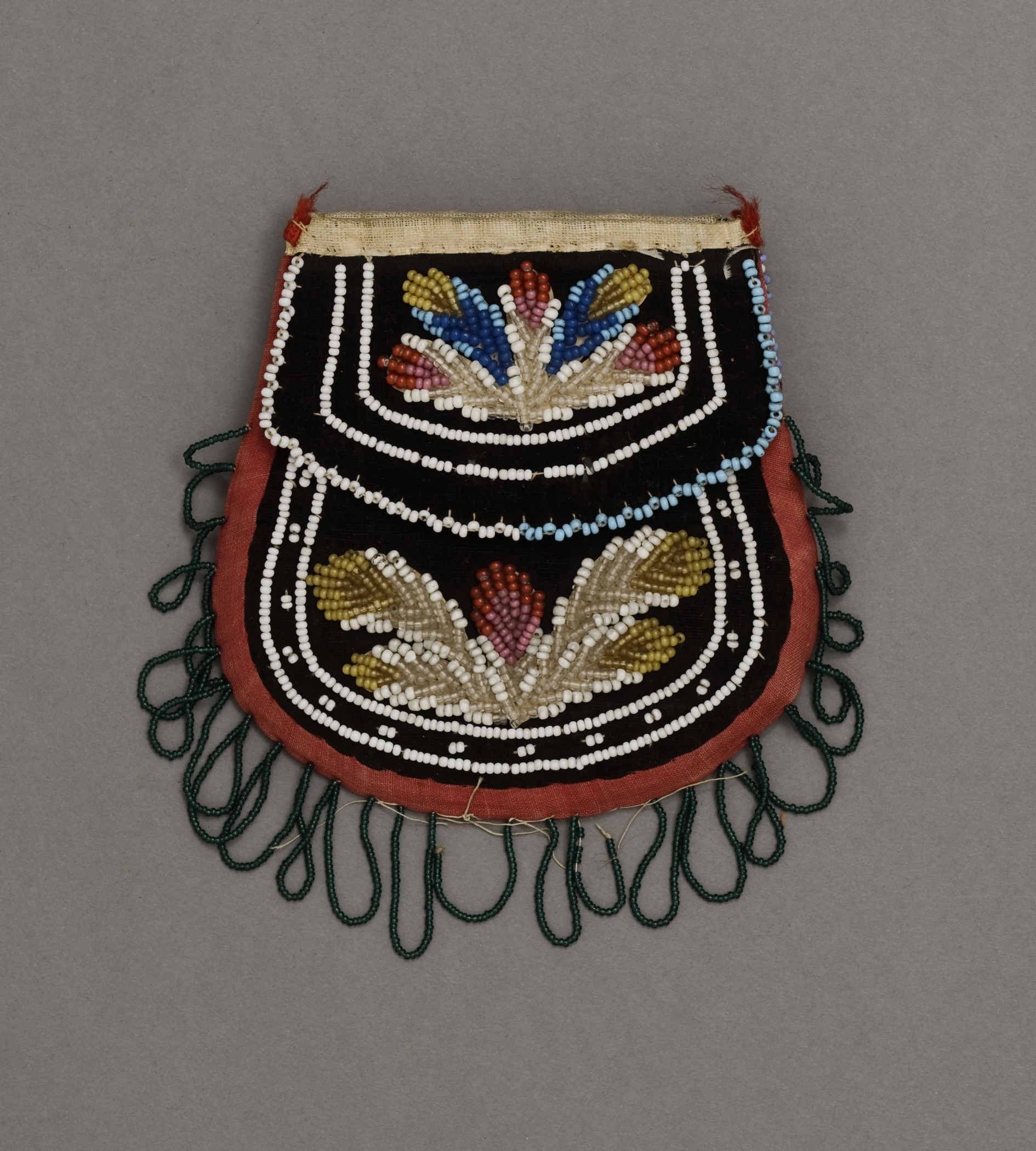Anishinaabe (Chippewa/Ojibwa)
Oblong birch bark basket with lid
- About 1900
- Birch bark, spruce root, wood, porcupine quills, and thread; dye
- 3 1/8 × 4 1/8 × 6 7/16 in.
Hood Museum of Art, Dartmouth College: Bequest of Frank C. and Clara G. Churchill; 46.17.9562
visibilityLook & DiscussBirch bark was an important resource to the people of the Northeast Woodlands. They used it in the construction of their homes, as the shells of their canoes, and for articles of clothing. They shaped and sewed it into a variety of dishes, storage containers, and ceremonial items.
Special birch bark objects were decorated with dyed porcupine quills. Quillwork is extremely time consuming and will not survive a lot of wear and tear.
Europeans admired these beautiful containers and they soon became popular trade and tourist items.
Explore the object
Native artisans make birch bark baskets by folding and sewing. They cut out an oval piece of bark for the top and bottom, and use a strip of birch bark for the sides. Using spruce roots, they sew the parts together and often reinforce them with a thin piece of wood wrapped and stitched into place. Usually the smooth inner side of the birch bark appears on the outside of the basket.
Anishinaabe, oblong birch bark basket with lid, about 1900, top view
For the decoration, basket makers pre-soak and dye porcupine quills. They insert the end of each quill through a tiny hole in the surface of the birch bark, and bend it underneath like a staple. The quills become rigid when they dry. This process requires an awl, a pointed tool originally made of animal bone and later metal, to pre-drill the holes. In this way, the basket makers sew without the use of a needle and thread.
Usually, women make decorated birchbark boxes. The artist who created this basket combined geometric and organic patterns. On the sides, she used a geometric pattern of green diamonds filled with white cross-hatching that alternate with white stars. On the top, she placed a sprig of berries, a very old design that may predate European contact. Porcupine quills are rigid and cannot be used to form curving lines. The artist created the round shape of the berries by inserting quills of varying lengths in parallel lines.
With extraordinary skill, she wrapped the porcupine quills around the edges of the lid, reinforcing its strength and framing the berries in a dynamic design. Finally, she highlighted the four corners of the box in red and green.
Learn More
Which one is your favorite?
Read The Birchbark House by Louise Erdrich.
This novel is filled with information about traditional Anishinaabe lifeways, including the many native uses of birch bark.




